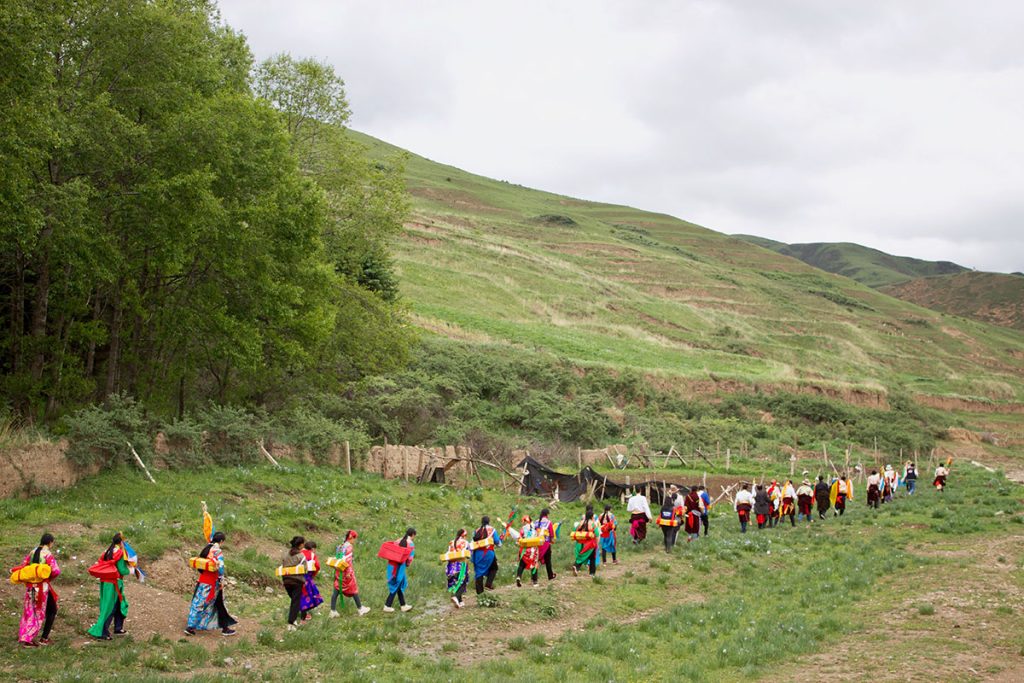

The auspicious arrow is carried around the village to invite fortune and prosperity (Golung Village, 2019)
“Collaboration and discussion rather than standardization are central to the vitality of oral traditions like Shépa”
Shépa, a word meaning “explanation” or “elucidation” in Tibetan, is a form of oral storytelling that has been nurtured and transmitted by members of the Choné community for generations. A recent open access publication titled Shépa: The Tibetan Oral Tradition in Choné by Mark Turin, Bendi Tso, Marnyi Gyatso and Naljor Tsering explores this poetic oral tradition from the eastern Tibetan Plateau.
Engaging with religious traditions, historical legacies and deep-seated cultural memories within Choné and Tibet, this oral poetry is sung antiphonally in question-and-answer style. It touches on local creation stories, wedding songs, and the Bon and Buddhist cosmologies which form and inform it.
Co-author Mark Turin (UBC Associate Professor, Anthropology) is the Interim Editor of Pacific Affairs (2023-24) and Co-Lead of the Institute of Asian Research’s affiliated Himalaya Program, both housed within the School of Public Policy and Global Affairs. In addition to his many teaching and research involvements, Dr. Turin directs the World Oral Literature Project which is an urgent global initiative to document and make accessible endangered oral literatures.
We sat down with Prof. Turin to hear more about the close collaborations that fueled this project, and the manifold aspects of Shépa highlighted by the comparative and historical approach of this book:
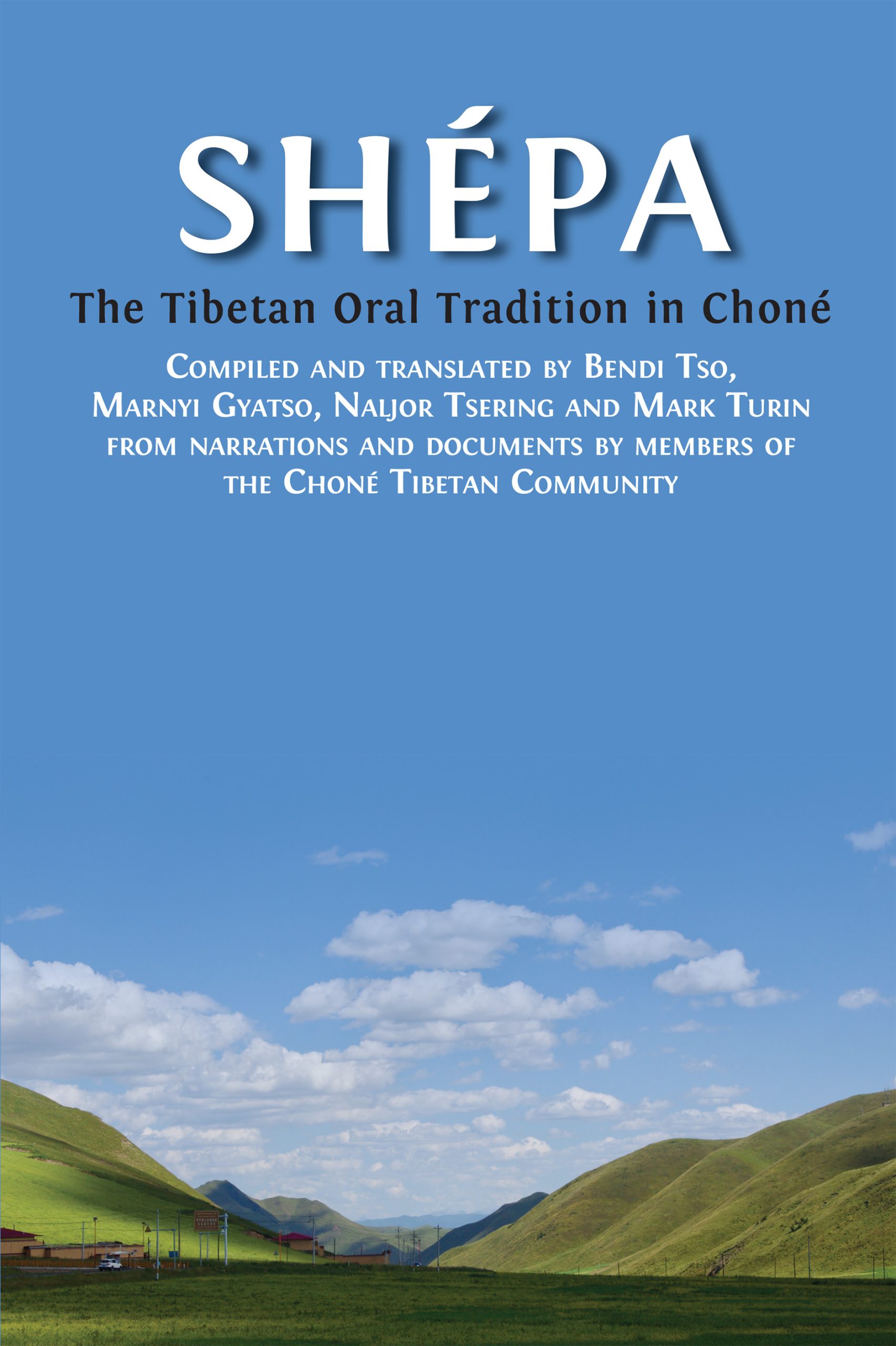
Cover image of the book.
The cover of the book features Chone pastureland, China (2019)
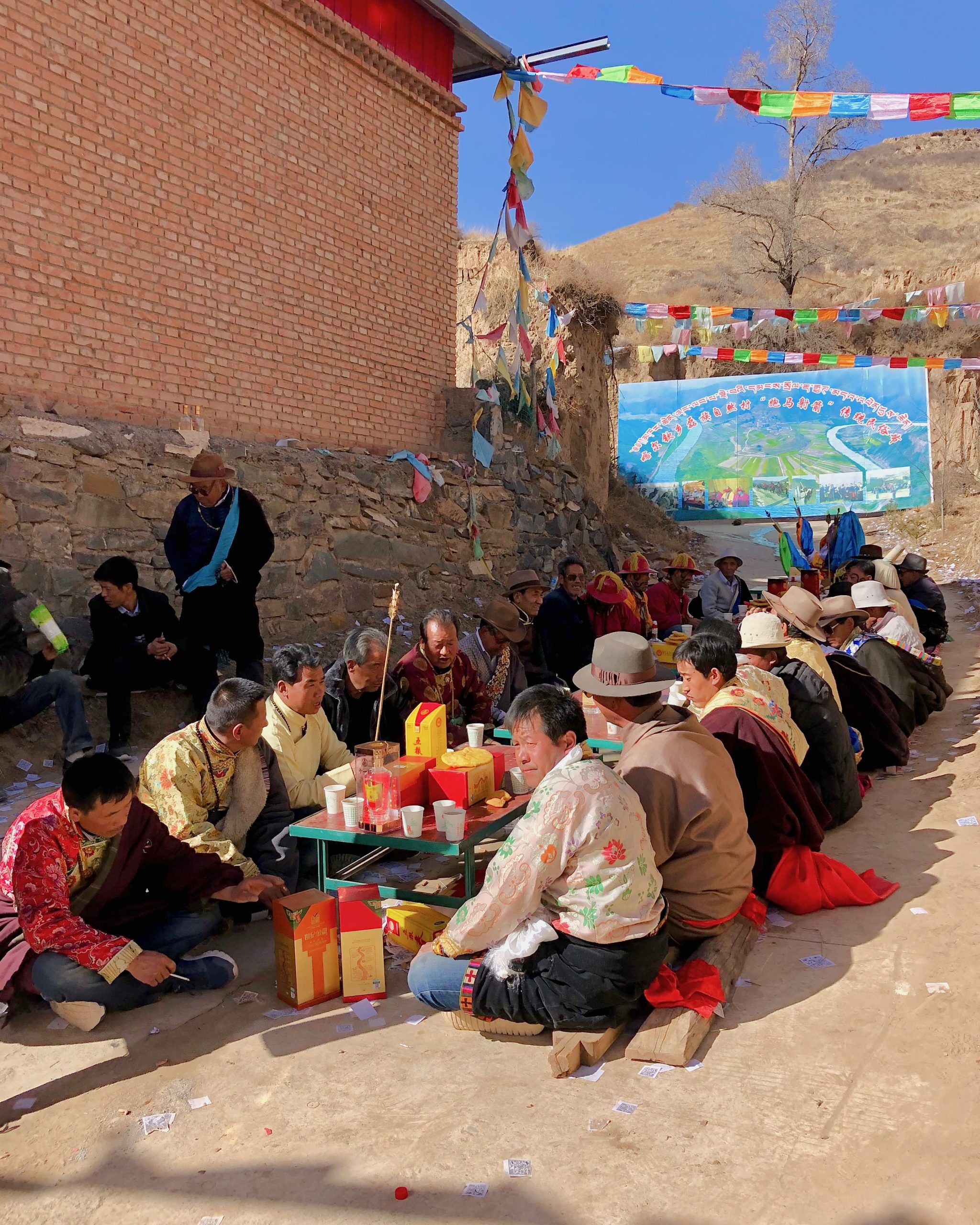
Shépa Performance
Male members of Lappa village seated according to age and reputation at a New year Shépa performance (2019)
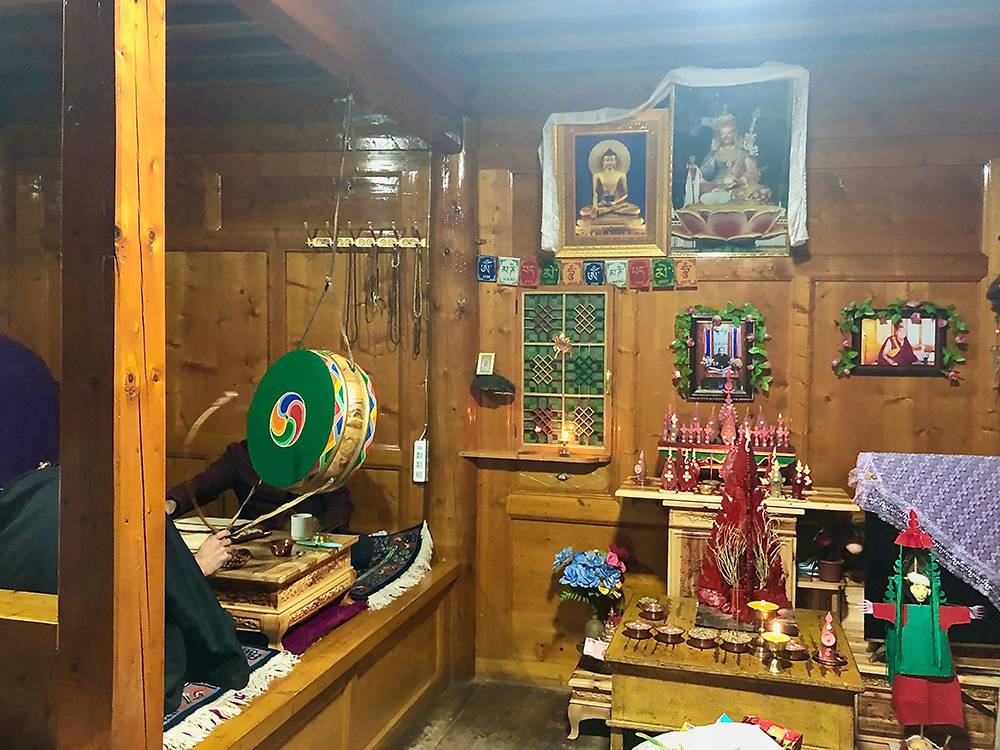
Ayne zhidak
A wooden cabinet designed for storing arrows located next to the main pillar in a living room (Paklung village, 2019)
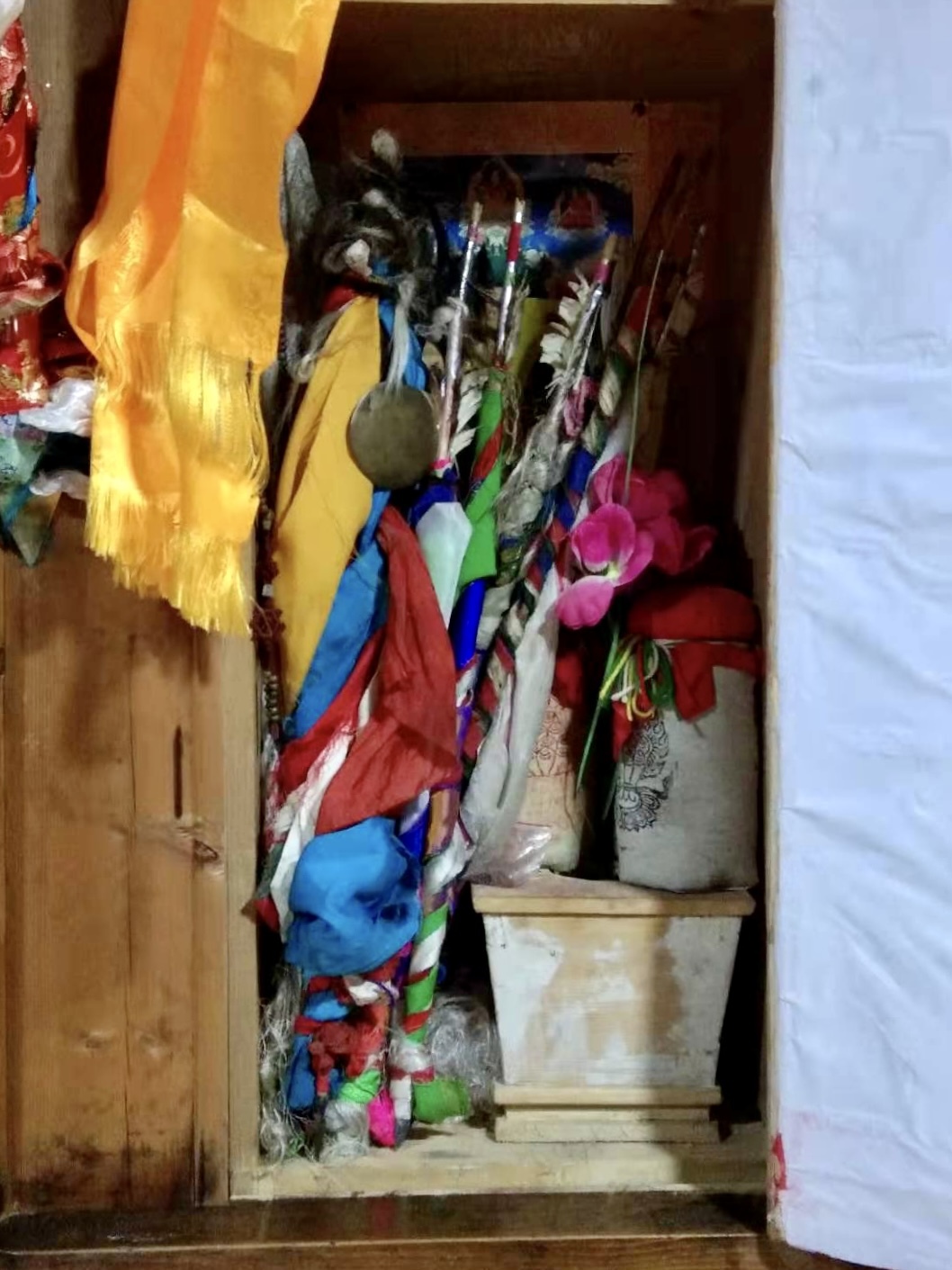
Arrows in ayne zhidak
A range of arrows stored in ayne zhidak (Paklung village, 2019)
The book is presented in a trilingual format (Tibetan, Chinese, and English). Could you discuss the significance of this trilingual approach and how it contributes to the preservation and understanding of Shépa?
While Shépa is performed and sung in Tibetan, the wider linguistic and cultural context in which it is situated is Chinese. Given the varied levels of access to Tibetan education in the Choné community, and the reality of Chinese being the lingua franca in most contexts, it felt essential to us to ensure that our work be accessible to readers literate in Tibetan and/or Chinese. We also decided to add an English translation to ensure global reach. It is both intellectually and pragmatically challenging to ensure consistency in three languages in a manuscript of this size and it was quite a task to implement our commitment to every aspect of the book being trilingual. In addition, we’re delighted that the book was accepted as part of the World Oral Literature Series with the award-winning Open Book Publishers, and that it is freely available to anyone with an internet connection to download for free.
This book is noted as being co-authored with three other individuals as well as members of the Choné Tibetan Community. Can you talk a little bit about this collaboration?
This book is the product of close teamwork and intense collaboration. Naljor Tsering was responsible for transliterating most recordings into written Tibetan and for the initial collation. Marnyi Gyatso assumed primary responsibility for examining the written texts of Shépa, providing the Chinese translations using seven characters for each verse—employing classical Chinese exclamatory particles to form rhyming patterns. Bendi Tso contributed the English translations and wrote introductions to each individual section. Bendi Tso and Marnyi Gyatso also composed the book’s introduction. In the whole process, Naljor Tsering provided his expertise in Bon religion and rituals. Marnyi Gyatso contributed his knowledge of Chinese and Tibetan history. I offered my experience in the documentation and preservation of oral traditions, and assumed responsibility for English editing and representational consistency across the volume. The introductions were translated into Chinese and Tibetan by Marnyi Gyatso and Naljor Tsering respectively. This book is an example of a collaboration in which every member had a distinct and clear role, and we simply wouldn’t have been able to do it without the close working relationship between the four of us. We felt it essential to credit members of the Choné Tibetan Community with whom we worked so intensively and who offered so generously of their time and knowledge, not just in the Acknowledgements page but as full co-authors. We’re grateful to the team at Open Book Publishers for working with us on how to best represent this partnership with Choné correctly in the front matter and catalogue entry.
Could you share any stories or experiences from your fieldwork in the Tibetan Plateau that had a significant impact on your understanding of Shépa and the local culture?
Sitting in a village plaza on a sunny day in August 2019, Bendi Tso listened to a group of Shépa performers engaged in a heated discussion. They were debating whether the formation or the destruction of the world occurred first according to the Buddhist perspective. In local understandings the causality between the formation and the destruction of the world is akin to the famous ‘chicken or egg’ question and has no definite answer or approved sequence. As one of the verses of Shépa points out: “if the formation of the world happens first, please tell me how it is formed. If the destruction of the world happens first, please tell me how it is destroyed.” Accordingly, performers oftentimes engage in debates based on their understanding and expertise to hone their skills and enrich their repertoire. This simple example showcases that collaboration and discussion rather than standardization are central to the vitality of oral traditions like Shépa. For these reasons, we present the many different versions of Shépa that we have collected to date in footnotes to showcase the diversity and variation of this oral tradition in both oral and textual transmission, ranging from verbal and rhetorical styles to actual alterations in meaning. This approach also helps us to focus readers’ attention on the fact that this book should be understood as a partial snapshot of this extraordinary tradition at a specific historical moment in time instead of being taken as an authoritative, comprehensive, or immutable account.
Shépa: The Tibetan Oral Tradition in Choné is a fully open access publication with the UK-based Open Book Publishers. Read it here.
All images featured in this story were photographed by Bendi Tso.


